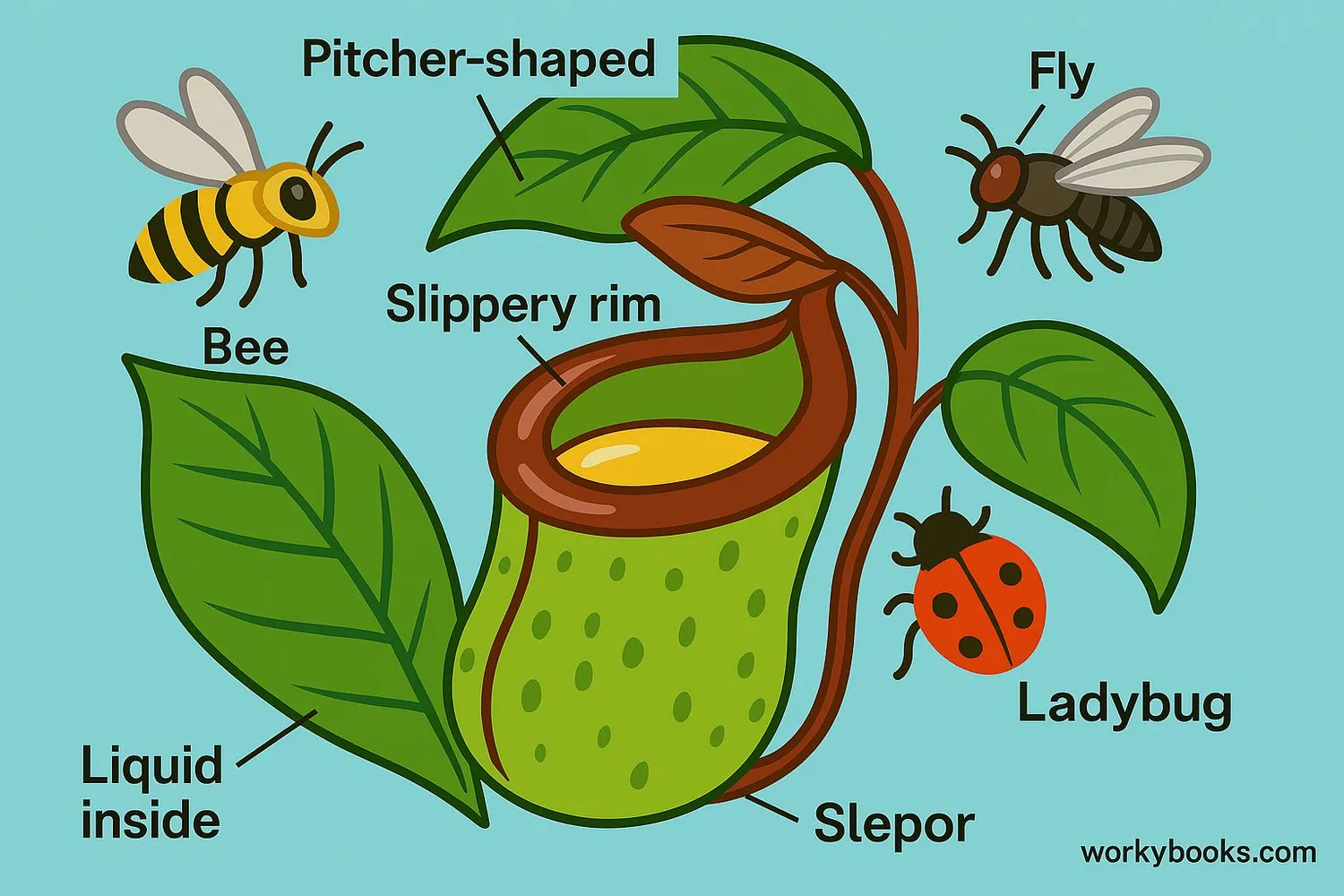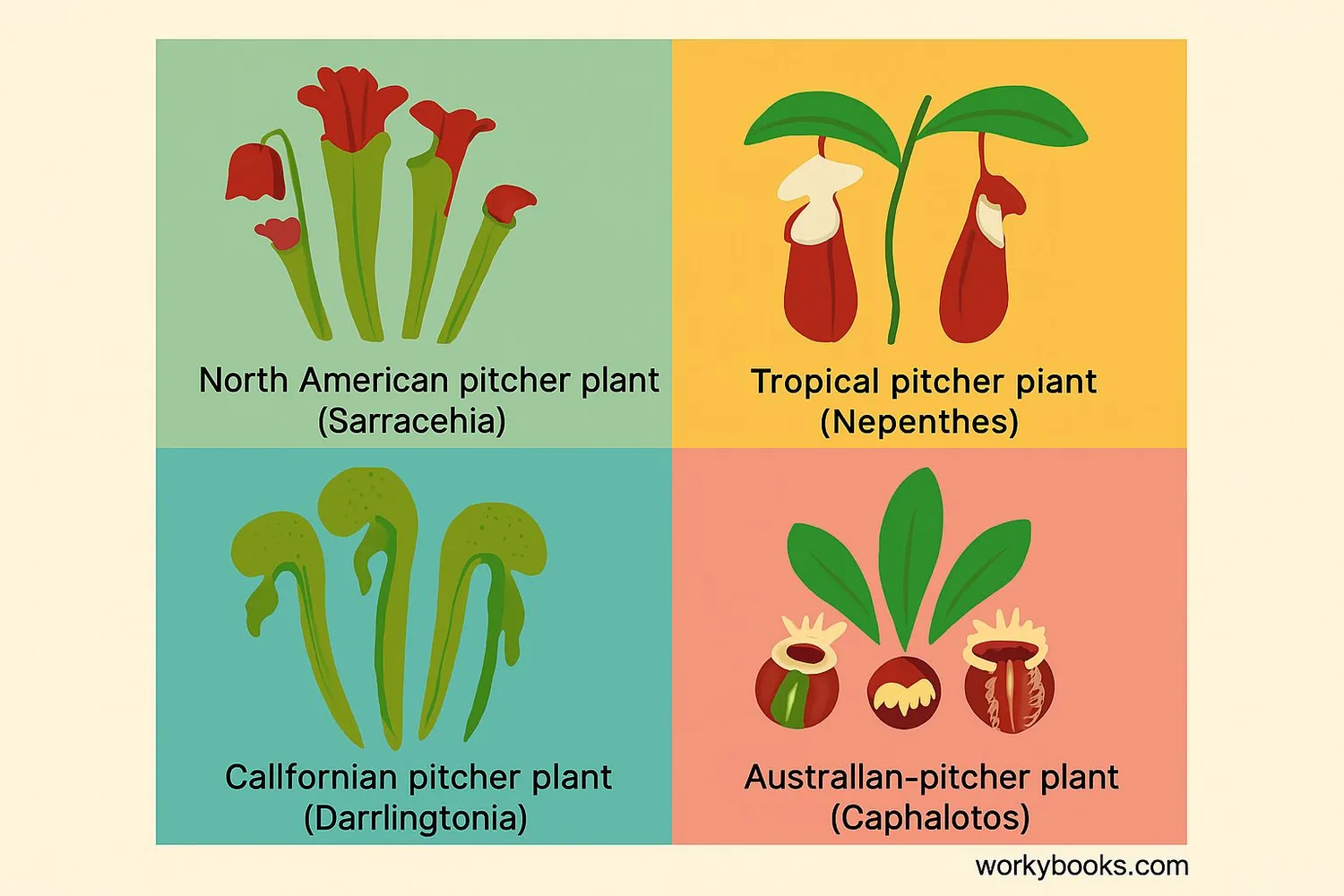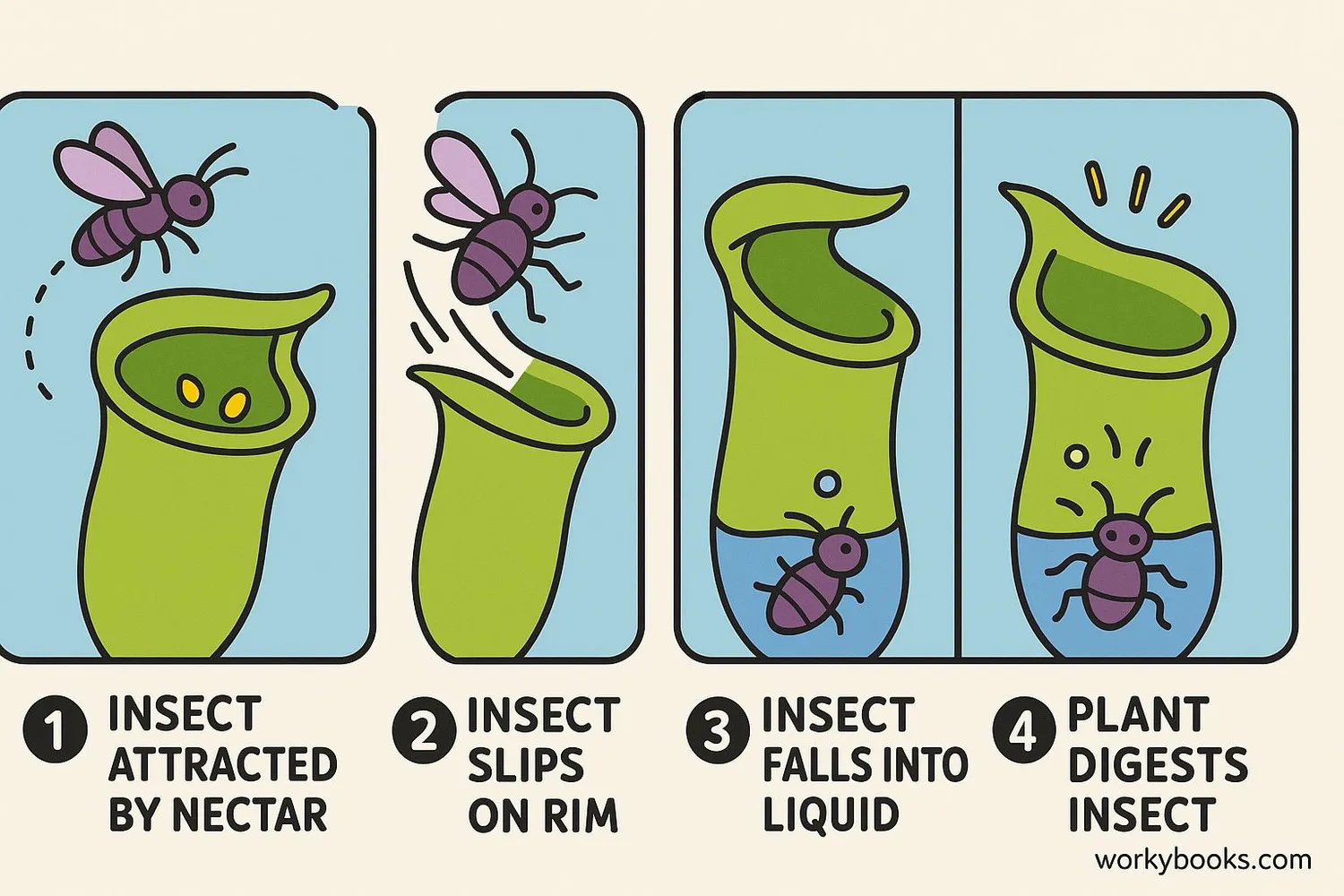Pitcher Plant - Definition, Examples, Quiz, FAQ, Trivia
Discover how these amazing carnivorous plants trap insects!
What Are Pitcher Plants?

Pitcher plants are fascinating carnivorous plants that trap and digest insects! They have special leaves shaped like deep pitchers or tubes. These plants grow in places where the soil doesn't have enough nutrients, so they get their nutrients from the insects they catch.
The pitcher part of the plant is actually a modified leaf. It contains a special liquid that digests insects that fall in. Pitcher plants use sweet nectar, bright colors, and sometimes even special scents to attract their prey.
Plant Fact!
Pitcher plants are found on every continent except Antarctica! They grow in places with poor soil nutrients like bogs, swamps, and tropical rainforests.
Types of Pitcher Plants

There are several different types of pitcher plants, each with unique features:
North American Pitcher Plants (Sarracenia)
Tall, tube-shaped pitchers that grow in bogs and wetlands of the eastern United States and Canada.
Tropical Pitcher Plants (Nepenthes)
Also called monkey cups, these grow in Southeast Asia and have pitchers that hang from vines.
California Pitcher Plant (Darlingtonia)
A rare plant with snake-like pitchers found only in Northern California and Oregon.
Sun Pitchers (Heliamphora)
Found on South American mountaintops, these have small pitchers with nectar spoons.
Australian Pitcher Plant (Cephalotus)
A small plant with chunky pitchers that looks like a tiny jug or mug.
Plant Diversity!
There are over 170 species of pitcher plants! The largest can grow pitchers over a foot long, while the smallest are just a few inches tall.
How Pitcher Plants Trap Insects

Pitcher plants have developed amazing ways to trap insects. Here's how their trapping process works:
Attraction
Bright colors, sweet nectar, and special scents lure insects to the pitcher
Slippery Surface
Waxy coating and downward-pointing hairs make it hard for insects to climb out
Digestive Liquid
Special enzymes and bacteria in the liquid break down the insect
Once an insect falls into the pitcher, it usually can't climb back out because of the slippery walls and downward-pointing hairs. The liquid at the bottom contains special enzymes (like those in our stomach) and bacteria that break down the insect. The plant then absorbs the nutrients it needs to grow.
This amazing adaptation allows pitcher plants to survive in places where other plants can't get enough nutrients from the soil!
Pitcher Plant Quiz
Test your knowledge about pitcher plants with this fun quiz! Answer all 5 questions to see how much you've learned.
Frequently Asked Questions
Here are answers to some common questions about pitcher plants:
Fun Pitcher Plant Trivia
Discover some amazing facts about pitcher plants!
Giant Pitchers
Attenborough's pitcher plant (Nepenthes attenboroughii) has pitchers that can hold up to 2 liters of liquid - big enough to trap and digest rats!
Tree Frog Homes
Some tree frogs actually live inside pitcher plants! They're immune to the digestive juices and eat insects that fall into the pitcher.
Scientific Discoveries
New pitcher plant species are still being discovered! Scientists found 13 new species in a single mountain range in the Philippines in 2019.
Rainwater Collectors
Some pitcher plants have special lids that act like umbrellas, preventing rainwater from diluting their digestive juices.


